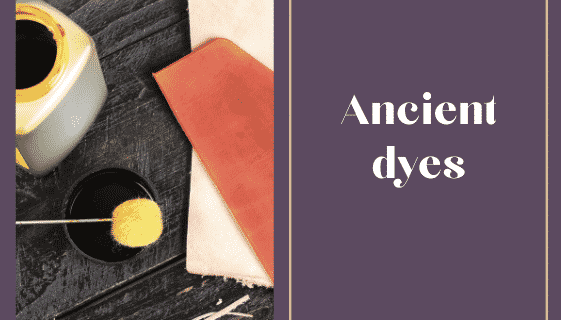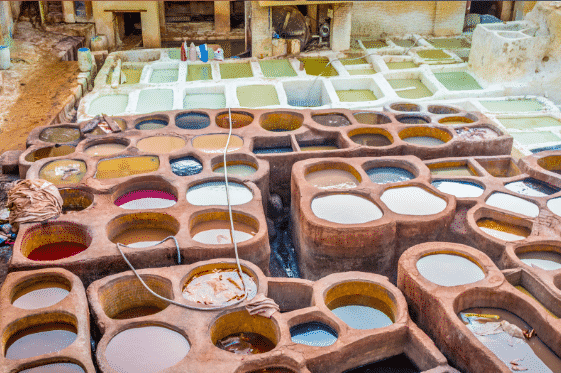
The history of the leather dye
Ancient dyes: how were the fabrics coloured in the past?
Dyeing is an ancient art, born in India around the 30th century BC, when spices began to be used, after careful and careful processing, to dye fabrics. From those years to today, countless advances have been made: we have gone from natural colours applicable only to natural fabrics, such as linen, cotton and silk, to chemical dyes that can be used, in the form of a liquid bath – the dyes are dissolved in the water in which the tissues are immersed.
But how has the practice of dyeing changed over time? And what was used to colour the fabrics? In this article we retrace the history of ancient dyes, looking at natural products that have been, over the years, the protagonists of one of the most fascinating processes.
The history of ancient dyes
To reconstruct in detail the history of ancient dyes is an almost impossible operation that would require the chemical analysis of the ragged shreds of tissue that have come down to us: what we know is that, at least initially, among the Greeks, The Romans and the Phoenicians, were used only the primary colors in their clearest shade because it was not yet known the way to give life to the intermediate or more tenuous colors.
Among the first colors that we can clearly identify is the purple of Tyre, one of the pigments that has imprinted its footprint on the history of humanity: mainly employed by the Phoenicians, the great dyers of the fifteenth century BC. It was a bright and expensive shade of red, so much so that it became the symbol of aristocrats and Roman emperors.
To obtain the purple of Tyre a long and detailed procedure was necessary: the spiny moray eel was put to macerate in lead tubs filled with abundant salted water, so as to obtain a liquid tending to yellow which, After being exposed to the sun it assumed the traditional and vivid purple color.
The cost of Tyre’s purple was too high, so much so that, over the years, it fell into disuse, replaced by cheap imitations, such as the mauve color produced at Perkin thanks to a synthetic process.
The other color of extreme value was the Oltremare di Tiro, born from a procedure similar to that required for the production of the purple of Tiro: there was need, however, of two different molluscs, the first that gave the red color and the second that gave the fabric a unique bluish shade.
Insects, molluscs, plants and flowers were, in a similar way to the above, the protagonists of the history of the tincture of the Greeks and the Romans. It seems, among other things, that they possessed a not too limited range of colors, including yellow, blue, blue and red in addition to the traditional black and white.
For the production of the red color the Romans used a bath of color extracted from an insect, the cochineal.
All in all, however, the dyeing techniques and pigments used remained a real secret for centuries. It is enough to think that the Chinese imperial court demanded that no one should know the secrets of this refined and precious art.

The art of dyeing in Italy
After the Crusades, the art of dyeing fabrics finally arrived in Italy: in Florence in 1400 there were over 200 dyeing workshops. The first great commercial traffics delivered, then, in Italy rudimentary chemical substances, useful to obtain new colors and more and more sought, and machinery gradually more and more to the vanguard.
The synthetic colors appeared, from the outset, as cheaper, cheaper and resistant, which is why they did not take too long before replacing natural pigments. At the time, by the way, the effects of artificial colours on the environment were completely ignored, and their spread completely overwhelmed Europe first and then the whole world.
Today the art of ancient natural dyes is increasingly recovered by small local companies in which the skilled artisans, in compliance with an all-Italian tradition, give new life, after centuries, to those natural processes of pigment extraction from flowers and plants.
Recovering the ancient techniques means bringing back to the market, now dominated by clothes and colors standardized and devoid of soul, give a unique character and emotion to unique and inimitable clothes and accessories that, thanks to a coloring craft, acquire a value without price.
The history of Made in Italy leather goods, based in Florence, is combined with the long tradition of dyeing, between secrets and innovation, giving life to clothes and accessories that no one will resist.